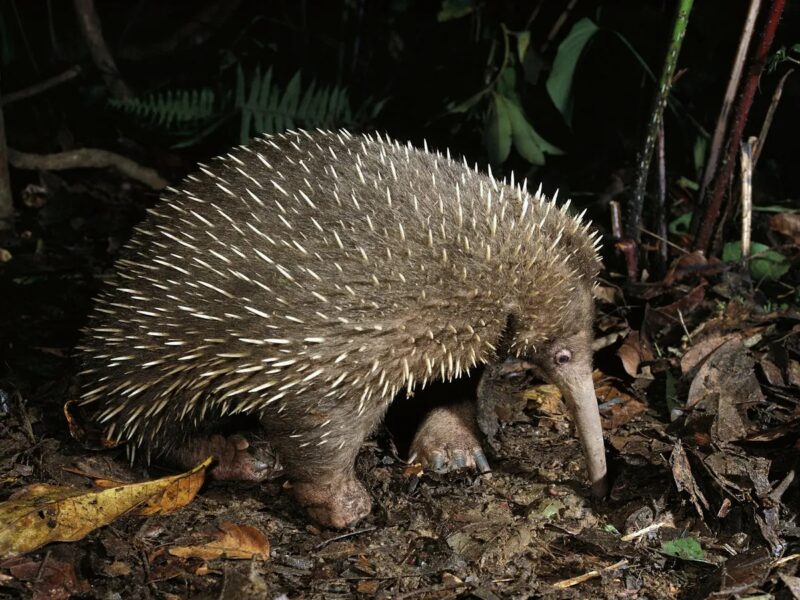
by Mick the Ram
The Attenborough long-beaked Echidna – named after the famous British natural historian and biologist, Sir David Attenborough – has been sighted for the first time in 62 years, after previously being feared to have become extinct.
The egg-laying mammal was recorded on live video by Oxford University researchers in the thick jungles of the Cyclops Mountains, west of Jayapura, in Papua, Indonesia.
Four separate clips of three seconds each, proved the elusive creature was still very much in existence.
Those first ever images were justification for the expedition after previous visits had uncovered signs of life, but the remoteness of their habitat meant proving their whereabouts was a challenge.
Sir David was said to be “absolutely delighted” at the news.
Around at same time as the dinosaurs
The Attenborough long-beaked echidna (scientifically known as Zaglossus attenboroughi) is believed to have emerged around 200 million years ago, at a time when the dinosaurs roamed the planet, indeed they have previously been referred to as “living fossils”. Until this recent discovery the only evidence that this particular species still existed was a decades-old museum specimen of a dead animal.
A multi-national team made up of biologists, scientists and researchers from Oxford University, traversed previously unexplored stretches of rugged rainforest in the Indonesian Cyclops Mountains, some 2,000m (6,561ft) above sea level.
Previous expeditions to the Mountains had found encouraging clues that the creatures could be around, with things such as ‘nose pokes’ in the ground that experts were confident could not have been made anything else.
Sacred mountains incredibly dangerous to explore
The steepness of the habitat makes exploration extremely dangerous, with the highest elevation requiring narrow ridges to be scaled, with sheer cliffs on either side. Earthquakes are also regular, just to add to the precariousness of the expedition.
Cyclops Mountains are also believed to be sacred by Papuans, so the team had to work closely with local villages, and agreed to forego certain places on route and at others they passed through silently.
Euphoria at footage
Dr James Kempton a biologist from the University explained the difficulties the group encountered. “You are slipping, being scratched and cut, leeches hang off the trees and then drop on you to suck your blood, and there are venomous animals all around you, such as the death adder.”
All that was forgotten and it all became worthwhile, when in the words of Dr Kempton, the whole team became “euphoric”. That was when they spotted on camera-trap footage, the Attenborough echidna.
He also made an admission that it was close to being missed. “I’m not joking when I say it came down to the very last SD card that we looked at, from the very last camera that we collected, on the very last day of our expedition.”
High security
Prior to this footage the only evidence that the species ever even existed was through a specimen kept under high security in the Treasure Room of Naturalis, the natural history museum of the Netherlands.
That itself was believed to have been from a more common species of the echidma, unti more forensic inspection revealed it to be entirely different and it was at that point it received its Attenborough tag.
Like nothing on earth
It really is a curious concoction of a creature. Apart from the duck-billed platypus, the echidna family are the only mammal that lays eggs. The Long-beaked variety is genetically and physically like no other animal alive on earth today.
Its posture is quite similar to a lizard, with limbs held in a sprawling stance, but that is where the similarity ends. The snout is two-thirds of the head length and curves slightly downward. They are primarily nocturnal and are commonly found to be in burrows.
Determination to preserve habitat for sustainability
Scientists are obviously unclear just how big the population of the Attenborough long-beaked echidna actually is, or indeed if it is sustainable. The gentle creature has already survived the elimination of the dinosaurs, 65-million years ago by a meteor, so the challenge is to help them overcome potential extinction, this time engineered by mankind destroying its habitat.






0 Comments